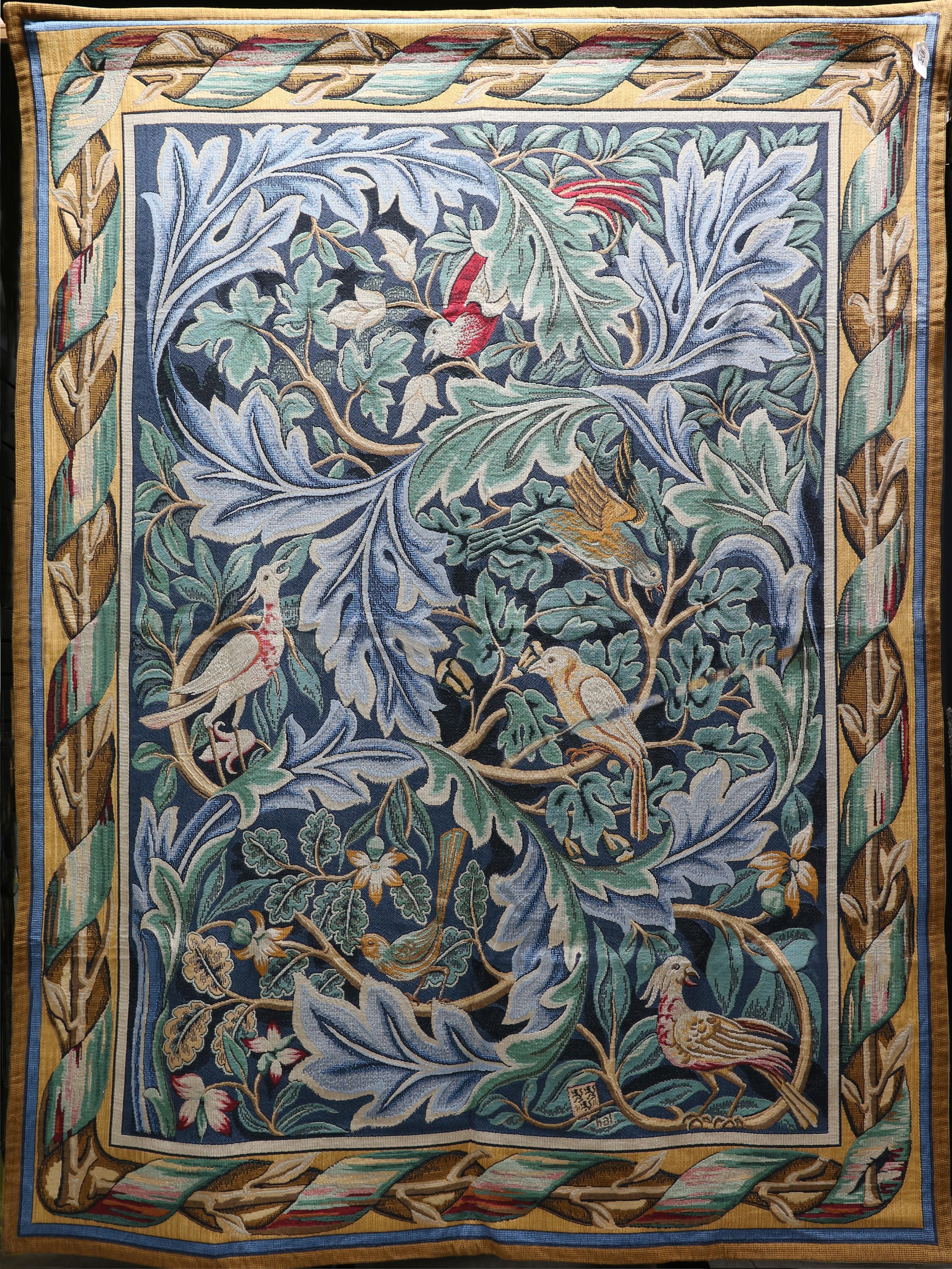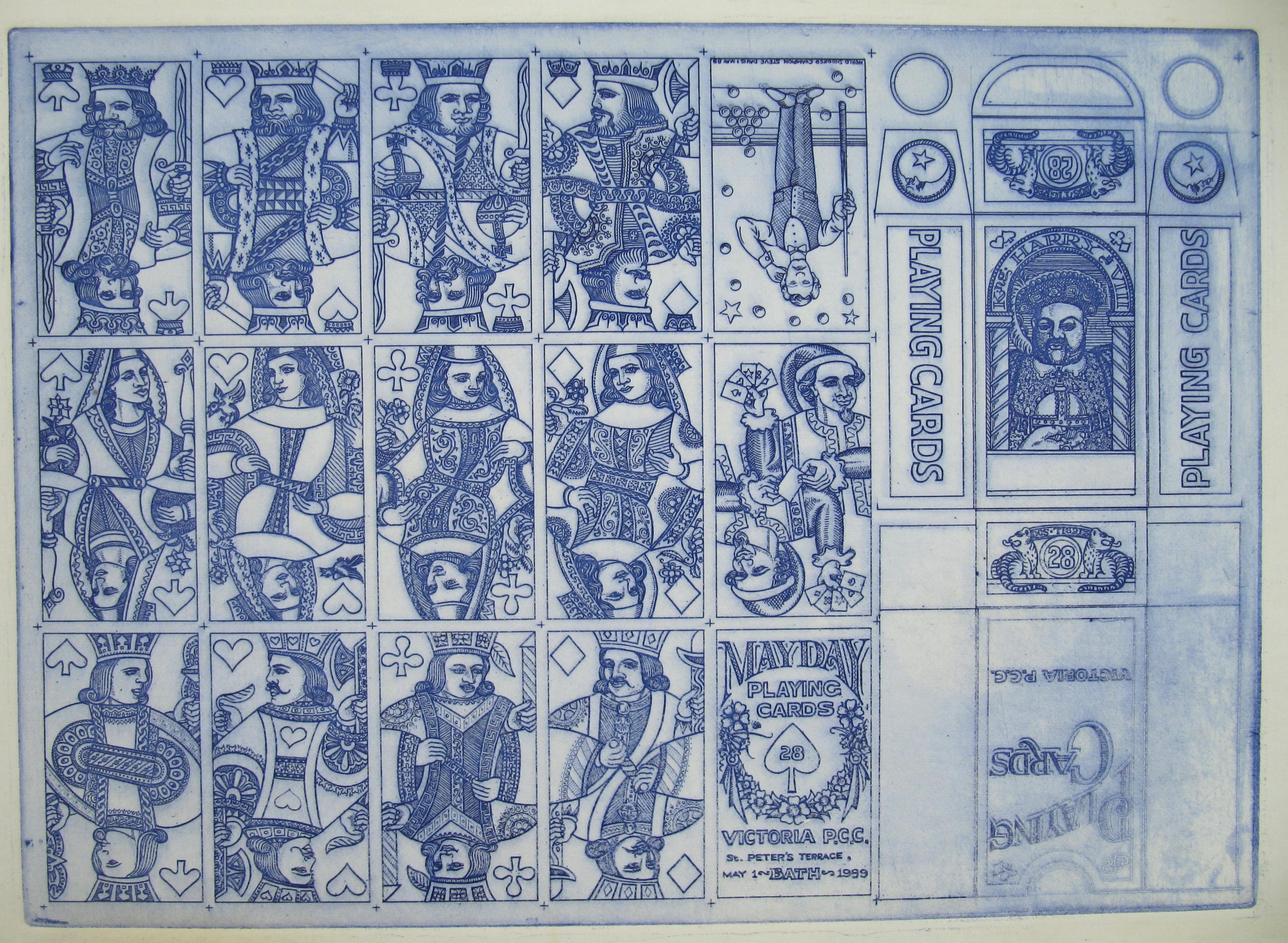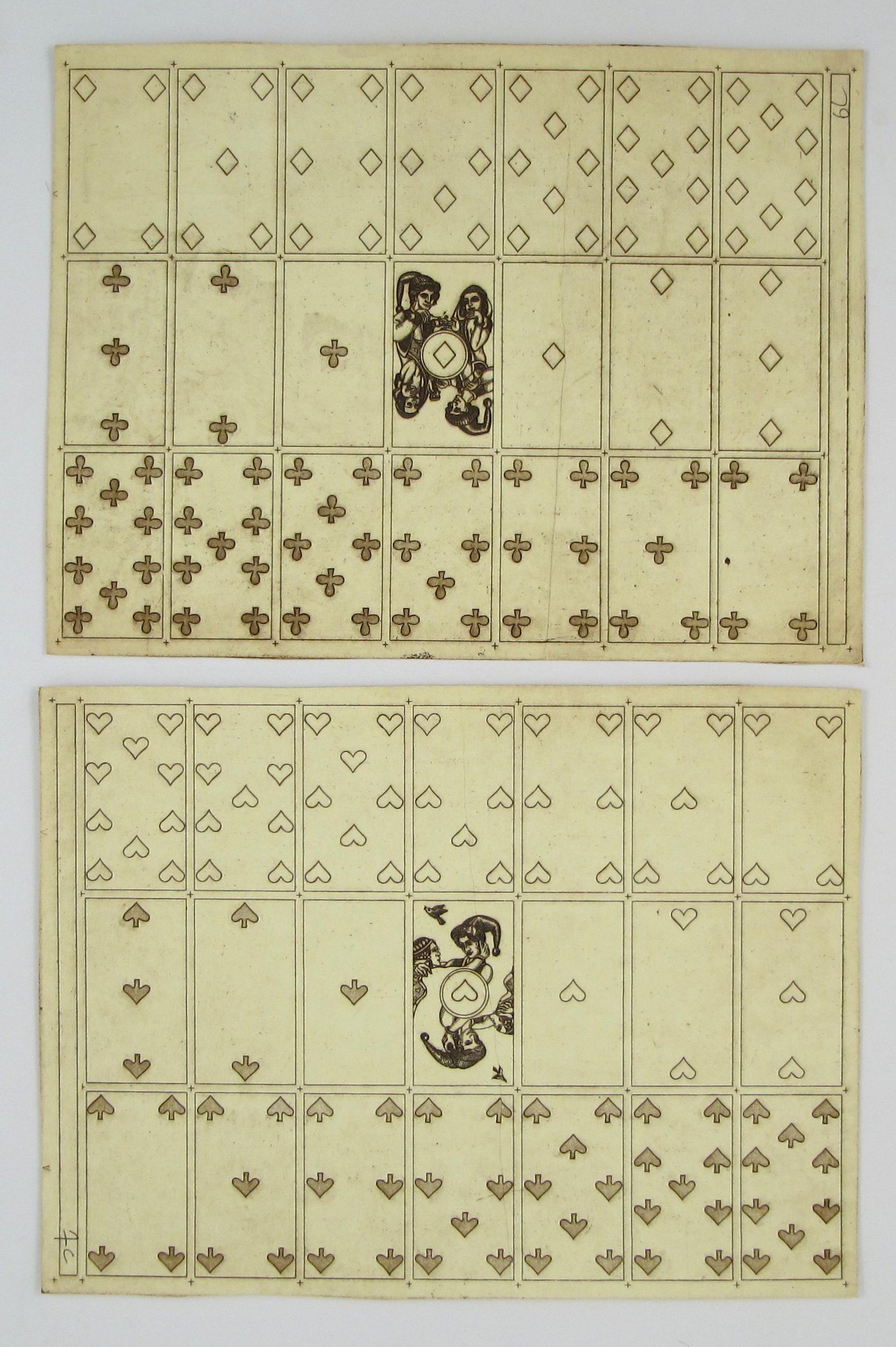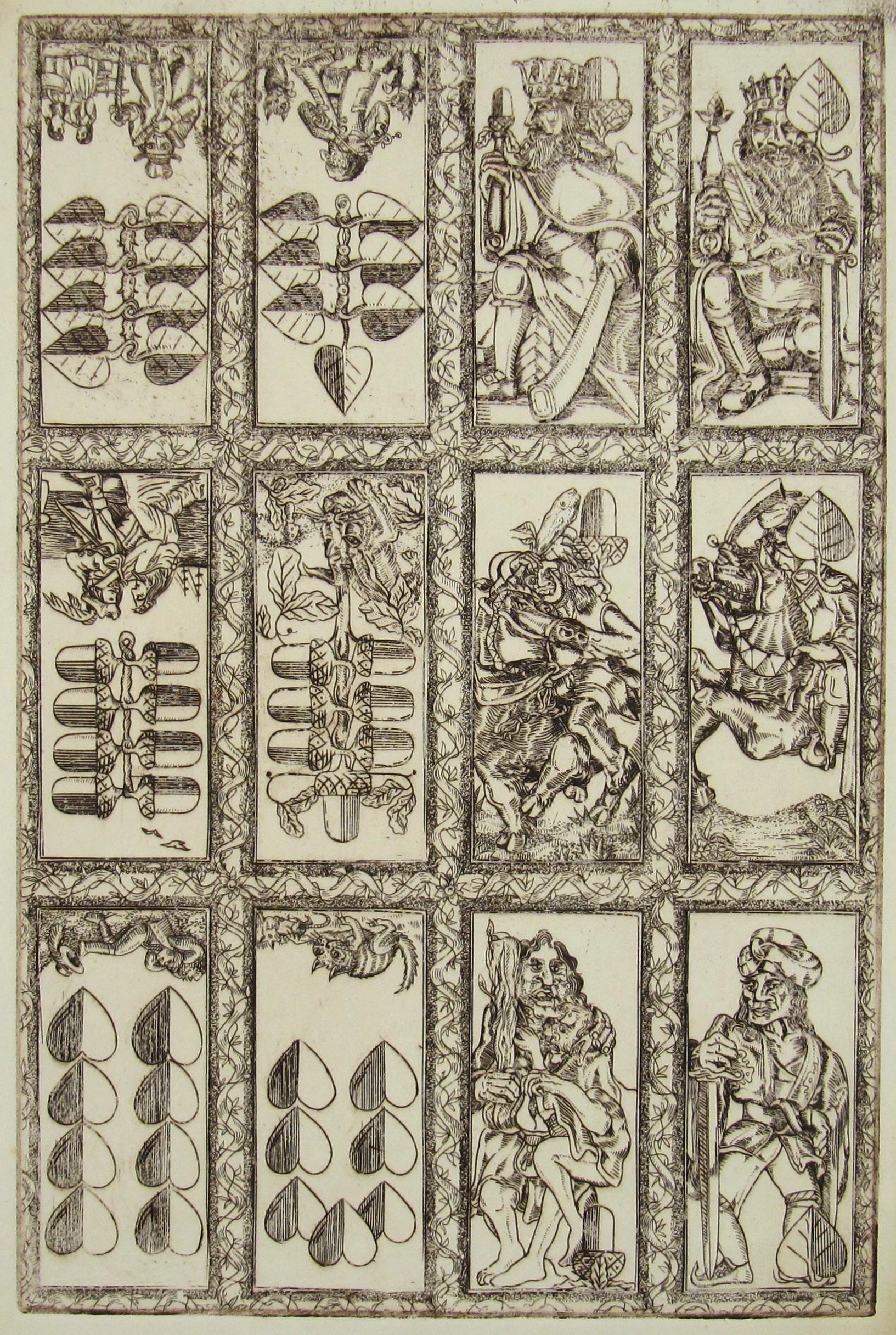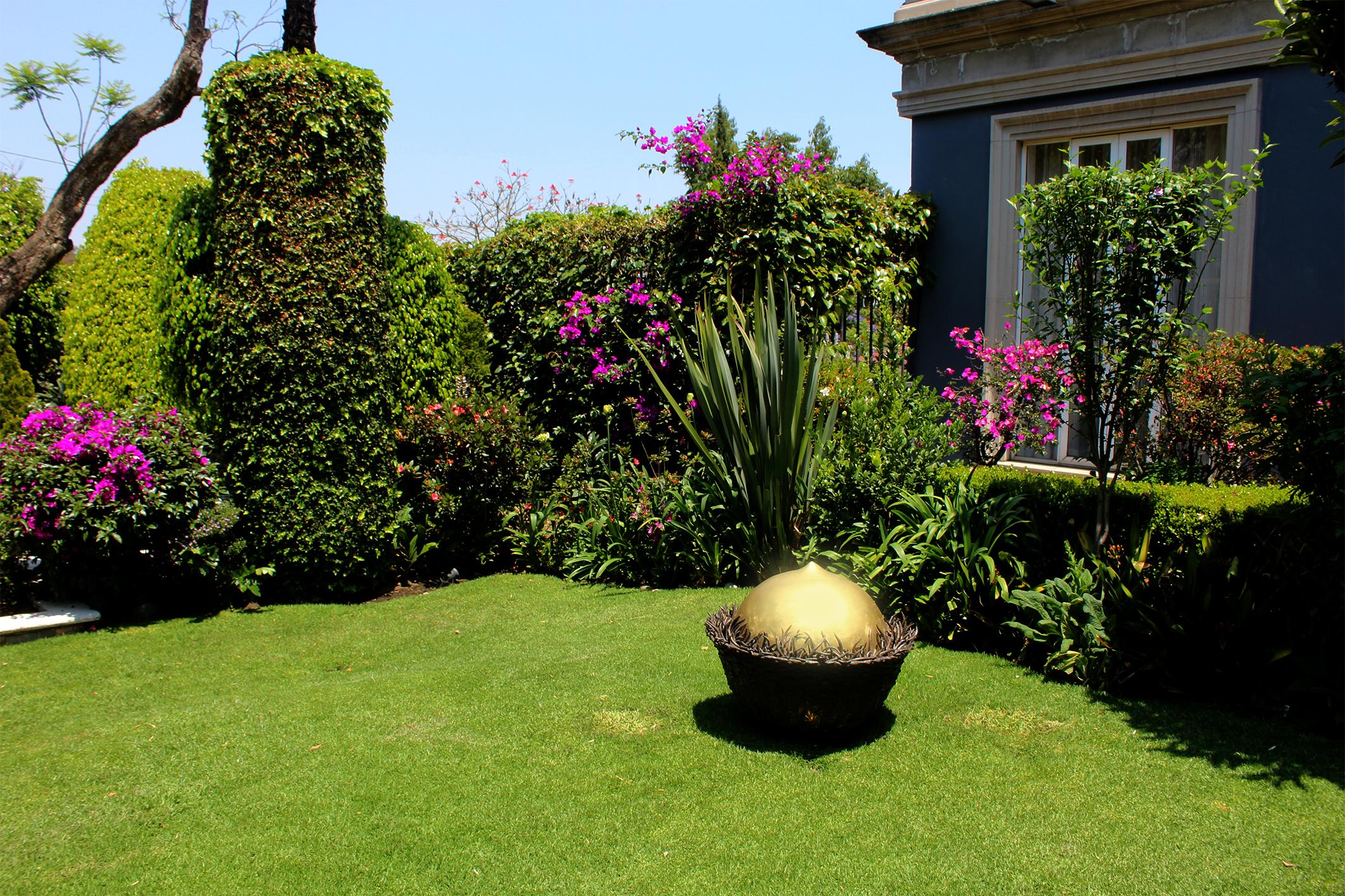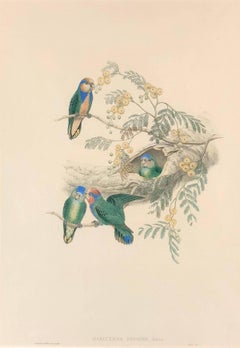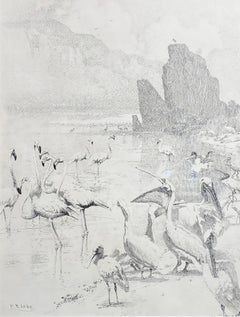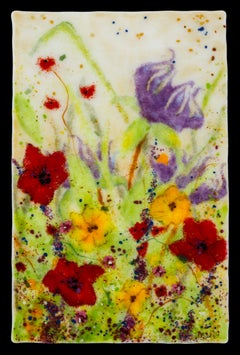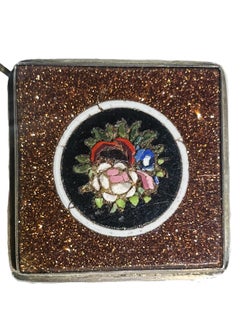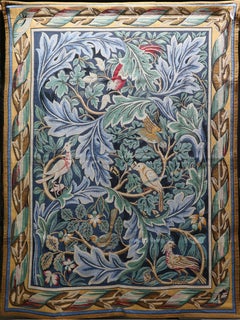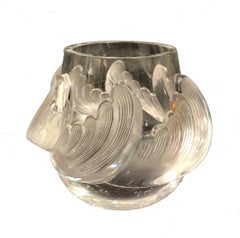
Wave Vase
View Similar Items
René LaliqueWave Vasec. 1950s
c. 1950s
About the Item
- Creator:René Lalique (1860 - 1945, French)
- Creation Year:c. 1950s
- Dimensions:Height: 8.5 in (21.59 cm)Width: 10 in (25.4 cm)Depth: 10 in (25.4 cm)
- Medium:
- Movement & Style:
- Period:
- Condition:
- Gallery Location:Missouri, MO
- Reference Number:1stDibs: LU74732449603
René Lalique
The career of the famed jewelry designer, glassmaker and decorative artist René Lalique spanned decades and artistic styles. Best known today for his works in glass, Lalique first won recognition for his jewelry. He was described as the inventor of modern jewelry by the French artist and designer Émile Gallé, and his luxurious naturalistic designs helped define the Art Nouveau movement. Later as a glassmaker in the 1920s and ‘30s, Lalique designed vases, clocks, chandeliers and even car hood ornaments that were the essence of Art Deco chic. Even now, the name Lalique continues to be a byword for a graceful, gracious and distinctively French brand of sophistication.
Born in 1860 in the Marne region of France, Lalique began his career as a jewelry designer in the last decades of the 19th century. His work employed now-classic Art Nouveau themes and motifs: flowing, organic lines; forms based on animals, insects and flowers — all rendered in luxurious materials such as ivory, enamel, gold and semi-precious stones. By 1905, Lalique had begun creating works in glass, and his style began to shift to a cleaner, sharper, smoother, more modern approach suited to his new medium. His Paris shop’s proximity to perfumer François Coty’s led him to experiment with beautiful perfume bottles. He offered the first customized scent bottles, transforming the perfume industry. By the end of the First World War, the artist had fully embraced Art Deco modernity, devoting himself to new industrial techniques of glass production and designs that manifest the sweeping lines and the forms suggestive of speed and movement characteristic of the style. Lalique’s work looked both backward and forward in time: embracing ancient mythological themes even as it celebrated modern progress.
Late in his career, Lalique took on high profile luxury interior design projects in Paris, Tokyo and elsewhere. He designed decorative fixtures and lighting for the interior of the luxury liner Normandie in 1935, and decorated the salons of well-known fashion designer Madeleine Vionnet. Today, Lalique’s influence is as relevant as it was when he opened his first jewelry shop in 1890. In a modern or even a traditional décor, as you will see from the objects offered on these pages, the work of René Lalique provides the stamp of savoir-faire.
- Nasiterna BruijniBy John GouldLocated in Missouri, MOJohn Gould (British, 1804-1881) Nasiterna Bruijni c. 1849-1861 Hand Colored Lithograph Image Size: approx 19.5 x 13.5 inches Framed Size: 27 3/8 x 21 1/2 inches John Gould was an English ornithologist and bird artist. The Gould League in Australia was named after him. His identification of the birds now nicknamed "Darwin's finches" played a role in the inception of Darwin's theory of evolution by natural selection. Gould's work is referenced in Charles Darwin's book, On the Origin of Species. Gould was born in Lyme Regis, Dorset, the son of a gardener, and the boy probably had a scanty education. Shortly afterwards his father obtained a position on an estate near Guildford, Surrey, and then in 1818 became foreman in the Royal Gardens of Windsor. He was for some time under the care of J T Aiton, of the Royal Gardens of Windsor. The young Gould started training as a gardener, being employed under his father at Windsor from 1818 to 1824, and he was subsequently a gardener at Ripley Castle in Yorkshire. He became an expert in the art of taxidermy, and in 1824 he set himself up in business in London as a taxidermist, and his skill led to him becoming the first Curator and Preserver at the museum of the Zoological Society of London in 1827. Gould's position brought him into contact with the country's leading naturalists, and also meant that he was often the first to see new collections of birds given to the Society. In 1830 a collection of birds arrived from the Himalayas, many not previously described. Gould published these birds in A Century of Birds from the Himalaya Mountains (1830-1832). The text was by Nicholas Aylward Vigors, and the illustrations were lithographed by Gould's wife Elizabeth, daughter of Nicholas Coxen of Kent. This work was followed by four more in the next seven years including Birds of Europe in five volumes - completed in 1837, with the text written by Gould himself, edited by his clerk Edwin Prince. Some of the illustrations were made by Edward Lear as part of his Illustrations of the Family of Psittacidae in 1832. Lear however was in financial difficulty, and he sold the entire set of lithographs to Gould. The books were published in a very large size, imperial folio, with magnificent coloured plates. Eventually 41 of these volumes were published with about 3000 plates. They appeared in parts at £3 3s. a number, subscribed for in advance, and in spite of the heavy expense of preparing the plates, Gould succeeded in making his ventures pay and in realizing a fortune. In 1838 he and his wife moved to Australia to work on the Birds of Australia and shortly after his return to England, his wife died in 1841. When Charles Darwin presented his mammal and bird specimens collected during the second voyage of HMS Beagle to the Geological Society of London at their meeting on 4 January 1837, the bird specimens were given to Gould for identification. He set aside his paying work and at the next meeting on 10 January reported that birds from the Galápagos Islands, which Darwin had thought were blackbirds, "gross-bills" and finches were in fact "a series of ground Finches which are so peculiar" as to form "an entirely new group, containing 12 species." This story made the newspapers. In March, Darwin met Gould again, learning that his Galápagos "wren" was another species of finch and the mockingbirds he had labeled by island were separate species rather than just varieties, with relatives on the South American mainland. Subsequently Gould advised that the smaller southern Rhea specimen that had been rescued from a Christmas dinner...Category
1850s Naturalistic Animal Prints
MaterialsLithograph
- Nasiterna PygmaeBy John GouldLocated in Missouri, MOJohn Gould (British, 1804-1881) Nasiterna Pygmae c. 1849-1861 Hand Colored Lithograph Image Size: approx 19.5 x 13.5 inches Framed Size: 27 3/8 x 21 1/2 inches John Gould was an English ornithologist and bird artist. The Gould League in Australia was named after him. His identification of the birds now nicknamed "Darwin's finches" played a role in the inception of Darwin's theory of evolution by natural selection. Gould's work is referenced in Charles Darwin's book, On the Origin of Species. Gould was born in Lyme Regis, Dorset, the son of a gardener, and the boy probably had a scanty education. Shortly afterwards his father obtained a position on an estate near Guildford, Surrey, and then in 1818 became foreman in the Royal Gardens of Windsor. He was for some time under the care of J T Aiton, of the Royal Gardens of Windsor. The young Gould started training as a gardener, being employed under his father at Windsor from 1818 to 1824, and he was subsequently a gardener at Ripley Castle in Yorkshire. He became an expert in the art of taxidermy, and in 1824 he set himself up in business in London as a taxidermist, and his skill led to him becoming the first Curator and Preserver at the museum of the Zoological Society of London in 1827. Gould's position brought him into contact with the country's leading naturalists, and also meant that he was often the first to see new collections of birds given to the Society. In 1830 a collection of birds arrived from the Himalayas, many not previously described. Gould published these birds in A Century of Birds from the Himalaya Mountains (1830-1832). The text was by Nicholas Aylward Vigors, and the illustrations were lithographed by Gould's wife Elizabeth, daughter of Nicholas Coxen of Kent. This work was followed by four more in the next seven years including Birds of Europe in five volumes - completed in 1837, with the text written by Gould himself, edited by his clerk Edwin Prince. Some of the illustrations were made by Edward Lear as part of his Illustrations of the Family of Psittacidae in 1832. Lear however was in financial difficulty, and he sold the entire set of lithographs to Gould. The books were published in a very large size, imperial folio, with magnificent coloured plates. Eventually 41 of these volumes were published with about 3000 plates. They appeared in parts at £3 3s. a number, subscribed for in advance, and in spite of the heavy expense of preparing the plates, Gould succeeded in making his ventures pay and in realizing a fortune. In 1838 he and his wife moved to Australia to work on the Birds of Australia and shortly after his return to England, his wife died in 1841. When Charles Darwin presented his mammal and bird specimens collected during the second voyage of HMS Beagle to the Geological Society of London at their meeting on 4 January 1837, the bird specimens were given to Gould for identification. He set aside his paying work and at the next meeting on 10 January reported that birds from the Galápagos Islands, which Darwin had thought were blackbirds, "gross-bills" and finches were in fact "a series of ground Finches which are so peculiar" as to form "an entirely new group, containing 12 species." This story made the newspapers. In March, Darwin met Gould again, learning that his Galápagos "wren" was another species of finch and the mockingbirds he had labeled by island were separate species rather than just varieties, with relatives on the South American mainland. Subsequently Gould advised that the smaller southern Rhea specimen that had been rescued from a Christmas dinner...Category
Mid-19th Century Naturalistic Animal Prints
MaterialsLithograph
- FlamingosBy William R. LeighLocated in Missouri, MOFlamingos By William Robinson Leigh (1866-1955) Signed Lower Left Unframed: 12" x 10" Framed: 21" x 17.5" Born near Falling Waters, West Virginia on a plantation a year after the Civil War, and raised in Baltimore, William Leigh became one of the foremost painters of the American West with a career of seventy-five years. Some people referred to him as the "Sagebrush Rembrandt". He was the son of impoverished Southern aristocrats and took his first art training at age 14 from Hugh Newell (1830-1915) at the Maryland Institute where he was regarded as one of the best students in his class. From 1883 to 1895, he studied in Europe, mainly at the Royal Academy in Munich with Ludwig Loefftz. From 1891 to 1896, he painted six cycloramas or murals in the round, a giant German panorama. In 1896, he began working as a magazine illustrator in New York City for Scribner's and Collier's Weekly Magazine, and he also painted portraits, landscapes, and genre scenes. However, he was not a very successful artist in those years in New York. Trips to the Southwest began in 1906 when he made an agreement with William Simpson, Santa Fe Railway advertising manager, to paint the Grand Canyon in exchange for free transportation West. In 1907, he completed his Grand Canyon painting...Category
20th Century Naturalistic Animal Drawings and Watercolors
MaterialsPen, Ink
Price Upon Request - A Bustle in the BarnBy Edward ArmfieldLocated in Missouri, MOEdward Armfield (1817-1896) "A Bustle in the Barn" c. 1880 Oil on Canvas Signed Lower Right Canvas Size: 24 x 20 inches Framed Size: 36 x 31.5 inchesCategory
Late 19th Century Naturalistic Animal Paintings
MaterialsOil, Canvas
Price Upon Request - Two Snowy OwlsBy Roger Tory PetersonLocated in Missouri, MOColor Lithograph Image Size: 30 x 19 inches Framed Size: 40.25 x 29.75 inches Edition 392/950 Artist Signed and Numbered Artist and naturalist Roger Tory Peterson...Category
Late 20th Century Naturalistic Animal Prints
MaterialsLithograph
Price Upon Request - Blossoms at the BendBy Wallace NuttingLocated in Missouri, MOHand-Colored Photo Lithograph Signed in Pen Lower Right Titled in Pen Lower Left Wallace Nutting (1861 - 1941) With a career of producing hand-tinted photographs of New England scenes distributed as prints, Wallace Nutting was widely known in the early 20th century when millions of copies of his work were sold. "Of the hundreds of professional photographers who were active in the pictorialist genre and competing for the tourist trade, Nutting developed what was by far the largest and most prominent operation, employing nearly 200 colorists, framers, and salesmen." (2447) He was also a craftsperson, writer and lecturer, and began his career as a Congregational minister. Retiring from the ministry in 1904, he moved from Cranston, Rhode Island to New York City for a year, then to Southbury, Connecticut from 1905 to 1912, followed by a move to Framingham, Massachusetts where he lived for the remainder of his life. Nutting also built furniture, doing reproductions of colonial pieces including chairs and cabinets. His writings included 20 books such as Old New England Pictures, Furniture of the Pilgrim...Category
Early 20th Century Naturalistic Landscape Prints
MaterialsLithograph
- Glass Wall art by Jennifer Baker Flower scene in Glass, Red, Purple, FloralBy Jennifer BakerLocated in Benahavis, ESThis floral, kiln formed glass artwork was created using layers of hand placed glass pieces. The piece is made to hang on a wall and is backed with a...Category
2010s Naturalistic More Art
MaterialsGlass
- Micromosaic Brooch With Flowers On Aventurine. 19th Century.Located in Firenze, ITMicromosaic brooch with flowers on aventurine. 19th century. In good condition. Weight 9 grams. Height 3.1cm x Width 3.1cm. Mosaic is composed of small glass tiles, produced from gl...Category
19th Century Naturalistic More Art
MaterialsGlass, Blown Glass, Mosaic
- Les Oiseaux (The Birds)Located in Atlanta, GAThis tapestry is based on a design by William Morris (1834-1896). He was instrumental in the revival of the decorative arts at the end of the 19th century. This tapestry is French ...Category
Late 20th Century Naturalistic More Art
MaterialsTapestry
- Mayday No. 28, 1989, by Karl Gerich of Bath - Playing Card Proof PrintLocated in Meinisberg, CHKarl Alexander Gerich (English, 23.4.1956 - 4.1.2016) Mayday No. 28, 1989 - Etching - Sheet ca. 37.5 x 26.1 cm - Plate ca. 32.6 x 23.5 cm Worldwide shipping for this object is complimentary - There are no additional charges for handling & delivery. You ask why this pack is called Mayday ? Well, the pack was finished on the 1st of May, 1989 – The day Steven Denis won the World Snooker Championship. Karl was a passionate snooker fan and this is how he marked the victory of his hero, who he also made the joker of this pack. The proof sheet printed in blue depicts all the court cards, title card, joker & that extra SD joker and the box in which the pack would live. Sheet is in good condition and suitable to be framed. Karl was a brilliant playing card maker and certainly one of the most genius artist-craftsmen I had the pleasure to learn about his work and know. He could do it all: Come up with the tale, weave meaning(s) into it, fill it with spirited characters of his liking, draw it, etch it, print it, colour it and handcraft the inks, paper and card into wondersome packs of playing cards, each of them living in their own, most exquisitely crafted boxes. Every pack a magical marvel, filled with the spirit of this genius card maker … All this he did using his Adana printing press, very simple hand tools and great skill. When Karl closed down his studio in St.Peter’s Terrace in Bath, England and moved to Poplar Close, he sold off work for which he felt he no longer wanted to be the custodian. So a number of prints reached the market then. Printed sheets by Karl Gerich...Category
1980s Naturalistic Figurative Prints
MaterialsPaper, Ink, Etching
- Merry Andrew No. 30, 1989 by Karl Gerich of Bath - Two Playing Card Print SheetsLocated in Meinisberg, CHKarl Alexander Gerich (English, 23.4.1956 - 4.1.2016) Merry Andrew No. 30, 1989 - Etchings - Sheet 24 x 32 cm - No plate mark (trimmed sheets) Worldw...Category
1980s Naturalistic Figurative Prints
MaterialsPaper, Ink, Etching
- Gerich No. 7, 1984, by Karl Gerich of Bath - Playing Card Print SheetLocated in Meinisberg, CHKarl Alexander Gerich (English, 23.4.1956 - 4.1.2016) Gerich No. 7, 1984 - Etching - Sheet 47.2 x 21.6 cm - Plate 39.5 x 14.6 cm Worldwide shipping for this object is complimentary - There are no additional charges for handling & delivery. Finished, uncolored print likely to be a spare sheet (over production), which were never used. Note Karl’s humor: Queen of hearts is carrying a shopping bag, reminiscent of Margaret Thatcher, who Karl admired (NOT). The jack of hearts is holding a Rubik cube, the jack of clubs is holding a can of lager and a glue sniffing bag and the jack of diamonds is playing an electric guitar. Except for creases in the margins, the sheet is in good condition and suitable to be framed. Karl was a brilliant playing card maker and certainly one of the most genius artist-craftsmen I had the pleasure to learn about his work and know. He could do it all: Come up with the tale, weave meaning(s) into it, fill it with spirited characters of his liking, draw it, etch it, print it, colour it and handcraft the inks, paper and card into wondersome packs of playing cards, each of them living in their own, most exquisitely crafted boxes. Every pack a magical marvel, filled with the spirit of this genius card maker … All this he did using his Adana printing press, very simple hand tools and great skill. When Karl closed down his studio in St.Peter’s Terrace in Bath, England and moved to Poplar Close, he sold off work for which he felt he no longer wanted to be the custodian. So a number of prints reached the market then. Printed sheets by Karl Gerich...Category
1980s Naturalistic Figurative Prints
MaterialsPaper, Ink, Etching


